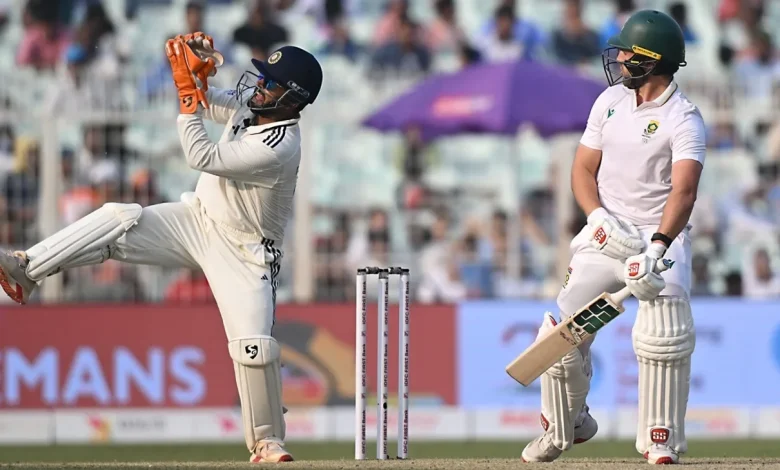Thrills vs skills: Are Test pitches sacrificing balance in favour of results?

If the Eden Gardens Test ends the way it seems likeliest to after two days of cricket, India and South Africa will have a 3-3 record over their last six Test meetings. These six Tests – five in South Africa, and one now in India – have produced breathtaking cricket at times, showing just how good these two teams are, and how closely matched.
Most of these contests, however, have lacked any semblance of balance between bat and ball. India have passed 200 only five times in 10 innings when they’ve had the chance to get that far (they chased down a target of 79 in the other innings), and 250 only twice. South Africa have passed 200 only four times, and 250 just once, in 11 innings.
Only one of the six Tests has gone into a fifth day, and if the Kolkata Test finishes on Sunday, as it looks set to, it will be the third in a row to end in three days or fewer. The Cape Town Test of January 2024 ended inside two days, and lasted just 642 legal balls; the shortest of all result matches in Test history.This, with some exceptions, has been the way of the World Test Championship (WTC), where the reward for Test wins (12 points) and the relatively negligible benefit of draws (4 points) over losses (no points) have led teams en masse to roll out bowler-friendly decks in home Tests.
Kolkata, though, has been a head-scratcher. It has served up extreme conditions, but it’s unclear whether they’ve come about through the usual route of the home team demanding them.
Through their last Test series against West Indies, India suggested more than once that they were looking to move away from their post-2021 trend of square turners, and prepare home-Test pitches aiming for balance between bat and ball. Both the pitches in that series roughly corresponded to this template, with Ahmedabad starting out with help for the seamers before flattening out, and Delhi playing slow and low throughout.
And in the days leading up to this Kolkata Test, neither team, judging by their public pronouncements, expected anything other than a traditional Indian pitch where batters could hope to score big runs in the first innings, and where wear and tear would begin to show its effects only around day three or thereabouts. South Africa left out their third spinner and picked a third seamer. India picked two seamers and as many as four spinners, which suggested they were expecting a heavy bowling workload.
Wiaan Mulder was undone by the extra bounce•Getty Images
“I think the conversation, leading up to the game, was that it was going to be a good wicket and it’s going to be hard work for us,” India bowling coach Morne Morkel said in his press conference at the end of day two. “We planned and focused more on how we are going to attack and target the South African batting line-up, we sort of took the thought of the conditions out of the equation and said, okay, we’ll adapt on the day, play it session by session.
“But we definitely thought it was going to be a good wicket and sort of deteriorate as the Test match goes on, and play it from there.”
The deterioration, as it turned out, began virtually from the first over of the match, during which one ball from Jasprit Bumrah kept low and two reared up. Uneven bounce has only grown more frequent and more pronounced in the sessions since, with the ball routinely causing bits of the pitch’s top layer to disintegrate and explode on impact.
With 27 wickets already having fallen, 39 remains the highest individual score, even though there have been nine scores of over 20, suggesting that this is the kind of pitch where a batter is never in, and where an unplayable ball is just around the corner.
Matches like this often make for riveting viewing. And just as they are in other kinds of Test match, every run and wicket is earned. Batters are always remembered for scoring runs in difficult conditions. And if tricky conditions make wickets likelier to occur, they also ramp up the pressure bowlers face to take them, with fewer runs to play with, with every opposition partnership bringing greater consequences.
For all that, though, this Kolkata Test, like so many others of its kind, has lacked two defining elements of Test cricket.
One is time pressure. Runs, wickets and time are the three sides of the triangle of tension that elevates some Test matches to epic status. Without the pressure of time, you lose the possibility that a game could go into its final session, or even its final day, with all four results still possible.
The other is the full physical challenge that Test cricket poses, asking fast bowlers if they can maintain their speed and intensity into their third spell of the day; asking spinners if they can keep sending down ball after ball, over long spells, with both control and high revolutions; asking batters if they can stay sharp, physically and mentally, through two, three, even four sessions at the crease.
The ideal Test pitch, then, would create conditions for the runs-wickets-time triangle to exist. It would challenge, physically and mentally, batters and bowlers of all types without leaving them feeling that their exertions will be futile. It would reward bowlers for bowling good lines and lengths, and punish them from straying from them. It would have true bounce, which would ensure edges carry to close-in fielders, and allow batters to trust their defensive and attacking strokes if executed properly. If these conditions are met, the ideal pitch could be tilted either towards seam or spin.
Pitch preparation, of course, is far from an exact science, and the best intentions of curators can often come to nothing, particularly if the weather comes in the way. But Test matches like Cape Town 2024 and Kolkata 2025 leave in their wake the question of whether the best intentions existed – or were allowed to exist – at all.
That home teams influence pitch preparation all over the world is incontestable. India have experienced both sides of this in recent years. They tend to come up against pitches designed to negate their spinners when they travel outside Asia and the West Indies – New Zealand, for example, prepare noticeably greener pitches against India than they do against South Africa or England. And at home, India have prepared numerous pitches designed to weaponise their spinners at the cost of the opposition’s fast bowlers.
In Nagpur in 2023, for example, they prepared a true designer pitch against an Australia side full of left-hand batters. It was selectively watered, rolled and mowed to have bare patches on a spinners’ good length, particularly in the areas outside the left-handers’ off stump at both ends. It turned out less spiteful than it appeared, but the intentions were clear.
Ravindra Jadeja spun a web around South Africa•AFP/Getty Images
This Eden Gardens pitch was the opposite, looking more benign than it proved to be. Was it, then, what India wanted, and asked curator Sujan Mukherjee to prepare? Or was it a pitch prepared to hold together for much longer than it did, which ended up behaving in an unexpected manner? Or was it caught between two sets of intentions?
The answer isn’t clear-cut, but on TV commentary, the former India keeper Dinesh Karthik suggested that the pitch had not been watered on the eve of the match. If this happened, India’s team management probably had a role to play.
Now India aren’t alone in having a significant influence on their home pitches, so it would be wrong to point fingers only at them. But does a thing become okay if everyone does it? And is it, well, good for Test cricket?
You could legitimately argue that it is. That extreme pitches minimise the chance of draws. That, rather than exaggerating home advantage, they have actually levelled the playing field, enabling West Indies to win Tests in Australia and Pakistan in the last two years, and New Zealand to pull off one of the greatest upsets of all time by beating India 3-0 in India. That this Kolkata pitch has left South Africa with a chance, still, of going 1-0 up.
You could argue that all the costs – such as, for example, the Test averages of Virat Kohli and Cheteshwar Pujara, which suffered irrevocably from a relentless diet of seaming, turning and/or uneven tracks from 2021 to the ends of their careers – are worth the upside of a Test-match landscape with fewer draws and a greater likelihood of unexpected results.
But what of Test cricket as a contest between ball and bat, and between runs, wickets and time? What of Test cricket as a showcase for the full range of the sport’s bewitching skills?
Karthik Krishnaswamy is an assistant editor at ESPNcricinfo





